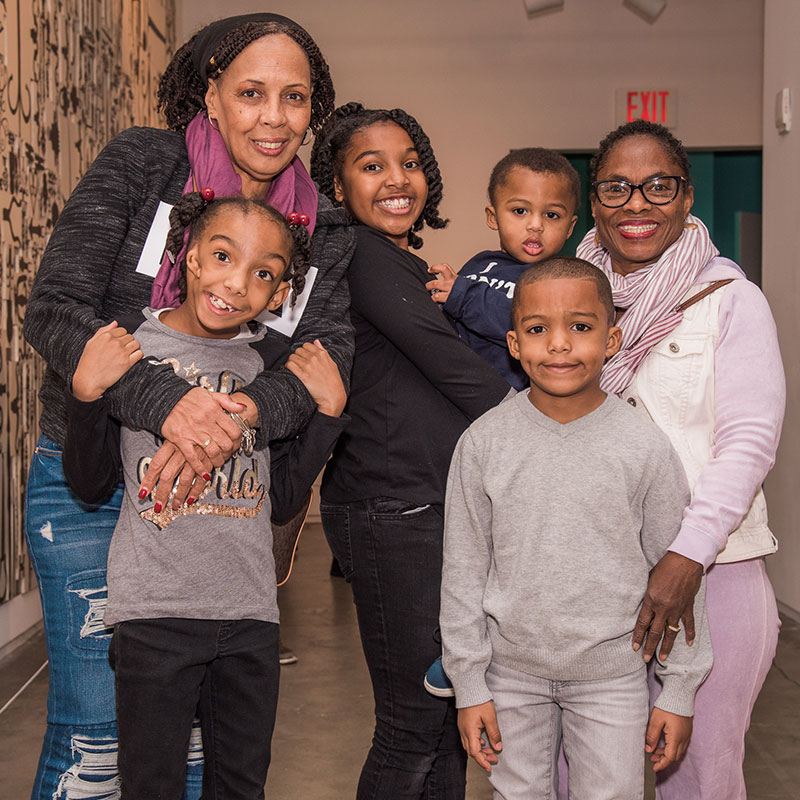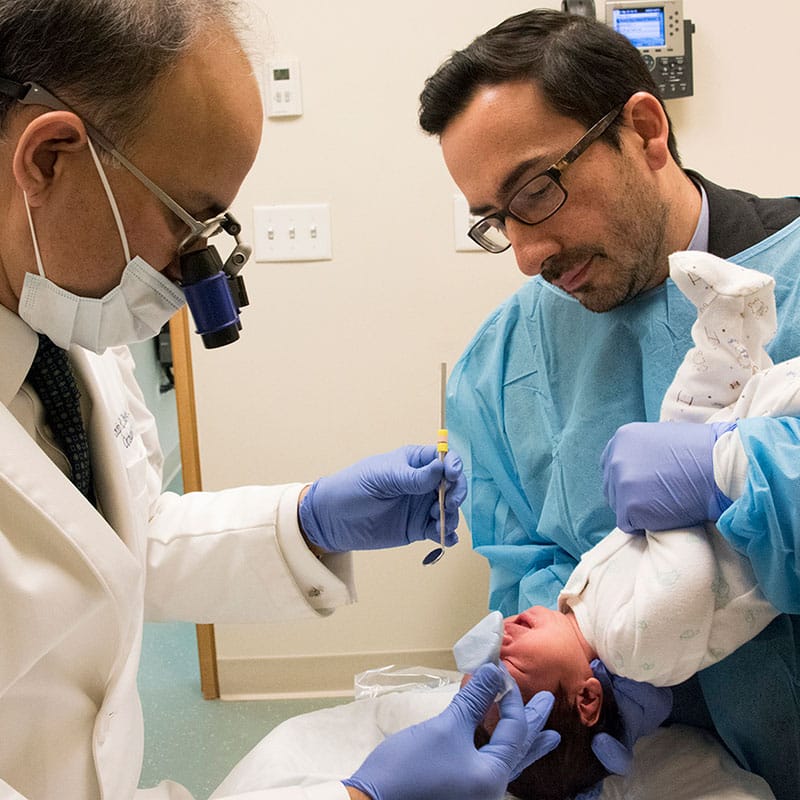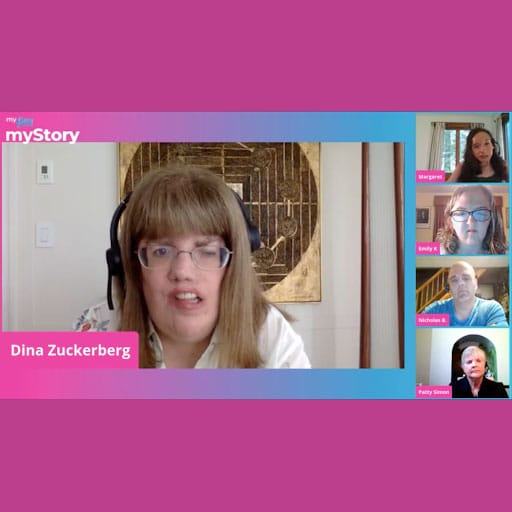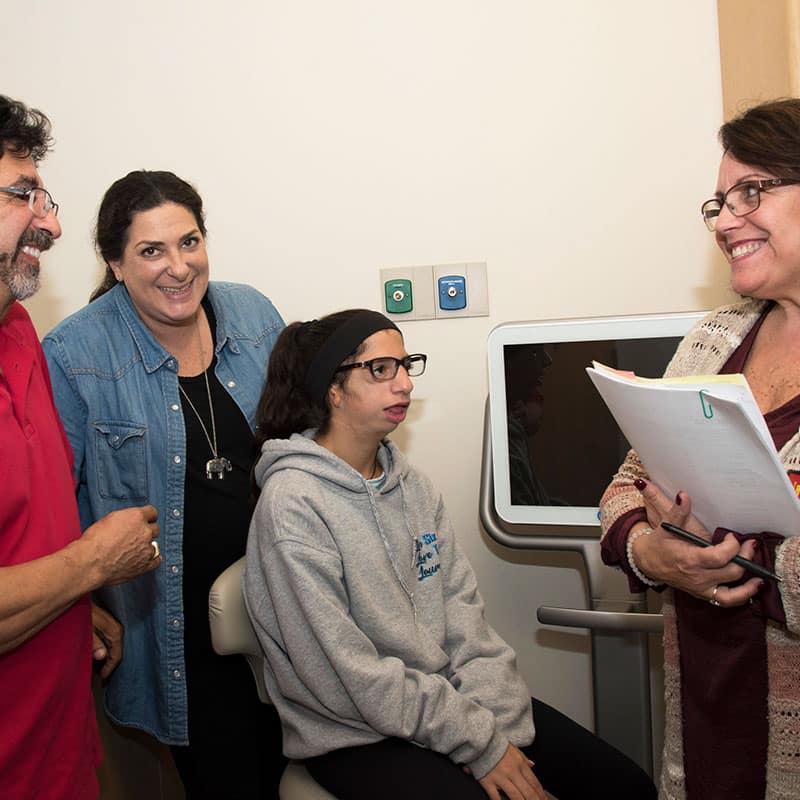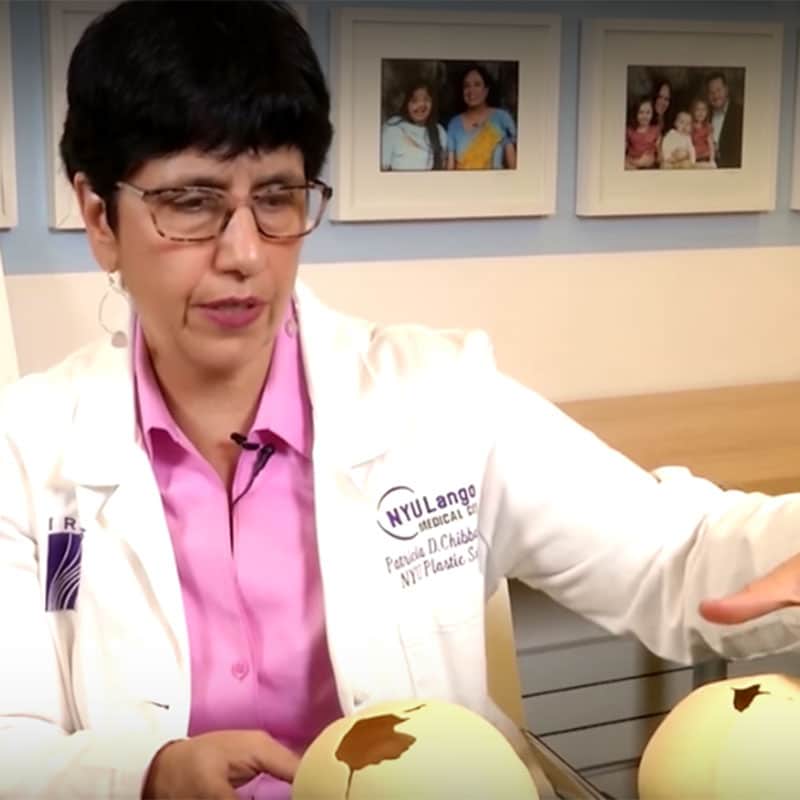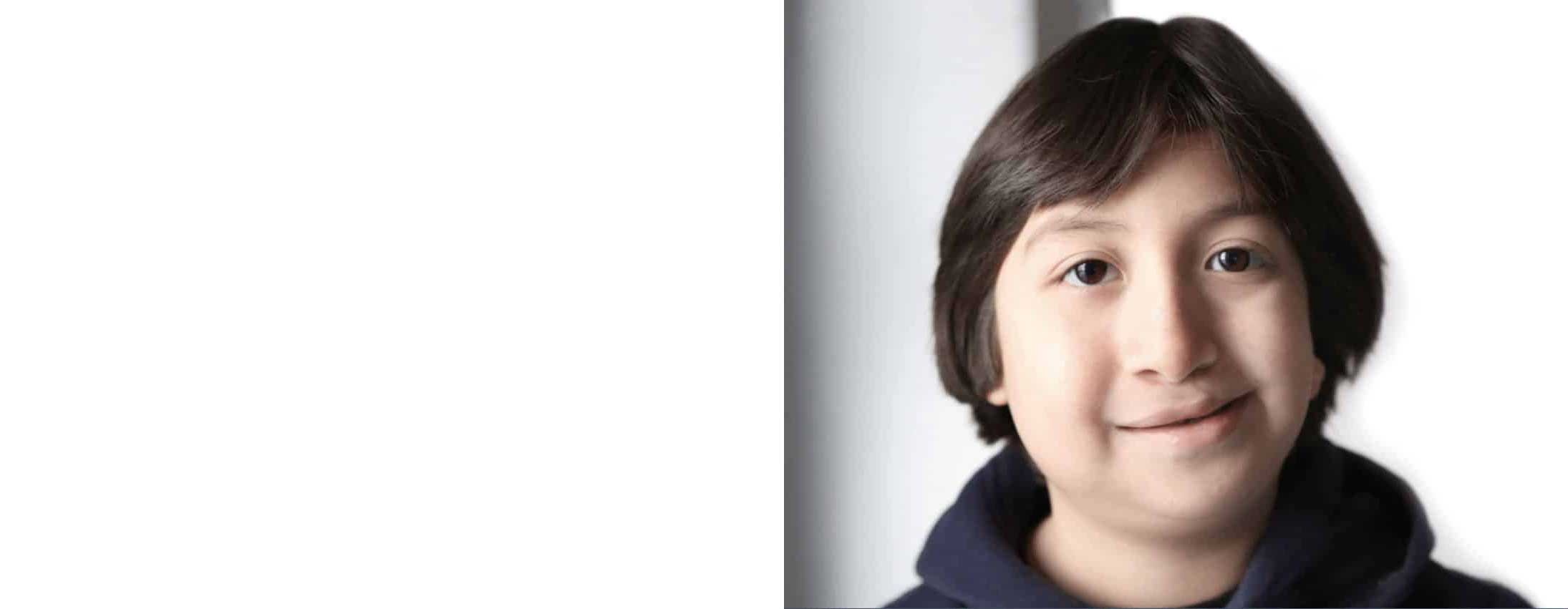Craniofacial Conditions
Learn about craniofacial differences
A craniofacial condition (also referred to as a craniofacial anomaly, abnormality, malformation, or difference) is a deformity affecting a child’s facial structure and skull.
There are many types of craniofacial conditions. Learn a bit about some of them below.
Amniotic Band Syndrome
Amniotic Band Syndrome (ABS) is a disorder present in the newborn infant in which constriction rings or bands, causing soft tissue depressions, encircle digits, extremities, or limbs and sometimes the neck, thorax, or abdomen. They may be associated with intrauterine amputations.
Apert Syndrome
A condition of craniosynostosis characterized by a large skull, widely spaced eye sockets, bulging eyeballs, tilted eyelids, underdevelopment of the upper jaw, misalignment and crowding of the teeth, webbed fingers and/or toes; can include cleft palate and intellectual disabilities
BWS
May be characterized by a wide spectrum of symptoms and physical features that vary in range and severity from case to case. However, in many individuals with the disorder, associated symptoms and findings may include excessive size, height, and enlargement of organs & more.
CHARGE Syndrome / Association
CHARGE Association is a rare disorder that results from several defects during early fetal development and affects several organ systems of the body.
Cleft Lip and/or Palate
Cleft lip alone, cleft lip with cleft palate, and/or cleft palate alone are the most common and frequently occurring congenital facial anomalies.
Cleidocranial Dysplasia (CCD)
Cleidocranial Dysplasia (CCD) is a rare genetic condition affecting bone and tooth development, underdeveloped collarbones, and more.
Craniofacial Microsomia
Craniofacial microsomia (CFM) is the 2nd most common birth defect that affects the face after cleft lip & palate. It involves underdevelopment of the ear, mouth, jaw, and more
Craniosynostosis
Craniosynostosis is a congenital condition where one or more sutures in a baby’s skull close prematurely leading to an abnormally shaped head causing potential intracranial pressure or development delays
Crouzon Syndrome
Crouzon syndrome is a type of craniosynostosis that results from the premature fusion of one or more cranial sutures leading to an abnormally shaped head and potential developmental issues.
Pfeiffer Syndrome
A condition of facial difference (multiple suture craniosynostosis) characterized by a tall head that is flat in the front, bulging of the eyes, a receded midface, high arched palate, crowded teeth, broad thumbs, and big toes.
Treacher Collins Syndrome
Treacher Collins Syndrome (TCS) is a rare genetic disorder that affects the development of bones and soft tissues including underdeveloped cheekbones, a small mouth & jaw, cleft palate, and more
Van der Woude Syndrome
Van der Woude Syndrome is a rare genetic disorder characterized by cleft lip and/or cleft palate. Individuals with Van der Woude Syndrome may have small depressions near the center of their lower lip.
Other Craniofacial Conditions
Bell’s Palsy
One-sided facial paralysis resulting from damage to the seventh (facial) cranial nerve that may result in the inability to close the eye. Symptoms may also include pain, tearing, drooling, and auditory hypersensitivity.
Carpenter Syndrome
Condition of facial difference characterized by an asymmetric tower-shaped skull, short neck, webbing of fingers and toes, and extra fingers. It is a very rare form of (multiple suture) craniosynostosis, and is passed on through an autosomal recessive inheritance pattern. (Charkins, 1996)
Freeman-Sheldon Syndrome
A genetic condition of facial difference characterized by microstomia (small mouth), flat mid-face, webbing of the neck, contractures of the hands and fingers, and club feet. Also called “whistling face syndrome.” The condition can run in families or occur spontaneously. (Charkins, 1996)
Hemangioma
A usually harmless tumor made up of blood vessels that can occur as a birthmark or develop later in life. Can be flat or raised: found anywhere in the body, but usually in the skin. Types include: “strawberry” or “raspberry” marks, port wine stains, cavernous. (Charkins, 1996)
Miller Syndrome (Postaxial Acrofacial Dysostosis)
An extremely rare condition of facial difference characterized by downslanting eyes; cleft palate; recessed lower jaw; small cup-shaped ears; a broad nasal ridge; limb anomalies that may include shortened and bowed forearms, underdevelopment of the cheekbones and forearm (radius and ulna); missing or webbed fingers and toes, and abnormal growth of the lower leg (tibia and fibula).
Moebius Syndrome
A condition of facial difference characterized by paralysis of the seventh (sometimes sixth) cranial nerve(s), microtia, and sometimes chest and limb anomalies (extra or webbed fingers or toes), cleft palate, hearing impairment, and a small mouth and jaw. (Charkins, 1996)
Nager Syndrome (Acrofacial Dysostosis)
A condition of facial difference (with great variability of expression) commonly characterized by flat cheeks and downslanting eyes, almost total absence of the eyelashes, low-set cupped ears, very small lower jaw, asymmetric underdevelopment (or absence) of the thumbs (Charkins, 1996) and the radial limbs. May also include clefting of the hard or soft palate.
Nevus
A pigmented or nonpigmented spot on the skin; may be flat or raised, hairy, smooth, or warty. Some types include: nevus flammeus (port wine stain—a flat, purple-red mark, usually on face or neck); nevus vasculosus (strawberry mark—a bright red, raised mark that increases in size); systematized nevus (a widespread congenital nevus that follows a pattern). (Charkins, 1996)
Parry-Romberg Syndrome
Also known as Progressive Facial Hemiatrophy (PFH) and Progressive Hemifacial Atrophy (PHA), Parry-Romberg Syndrome involves a slow, progressive wasting of the soft tissues of half of the face, usually affecting the eyes and hair. May also involve neurological abnormalities such as seizures and trigeminal neuralgia. The range and severity of symptoms vary greatly.
Pierre Robin Sequence
A condition of facial difference characterized by severe underdevelopment of the lower jaw, a backward-positioned tongue, and usually a cleft palate. If other problems are noted, the child has a syndrome. The two conditions that most commonly cause Pierre Robin sequence are Stickler and velocardiofacial (Shprintzen) syndromes. (Charkins, 1996)
Port Wine Stain (Capillary Hemangioma)
A flat, purple-red birthmark. (Charkins, 1996)
Positional (Deformation) Plagiocephaly
Skull asymmetry (“twisted”) characterized by a flattening of various surfaces of the skull, not caused by premature fusion of skull sutures (which is known as “synostotic plagiocephaly”). With Positional Plagiocephaly, skull x-rays will show open sutures. Possible causes include Torticollis, premature birth, intrauterine pressure, or sleeping position.
Saethre-Chotzen Syndrome (Acrocephalosyndactyly Type III)
A condition of facial difference (multiple suture craniosynostosis) characterized by asymmetric head and face, low-set hairline with turned up hair follicles, droopy eyelids (ptosis), low-set ears, beaklike nose, deviated septum, short fingers with some possible fusing. The features are not very obvious, and may be confused with either Crouzon, or Pfeiffer syndrome or with unilateral coronal synostosis. Saethre-Chotzen Syndrome is distinct, however, because the site of the altered gene lies on chromosome 7. (Charkins, 1996)
Stickler Syndrome
A condition of facial difference is characterized by skeletal abnormalities, arthritis, and eye problems, in addition to features of Pierre Robin sequence. (Charkins, 1996)
Sturge-Weber Syndrome
A congenital condition characterized by a port wine stain, usually on one side of the face, and a hemangioma on the brain. May also include seizures, glaucoma, developmental delays, and enlarging of the eye on the side of the port wine stain. (Charkins, 1996)
11;22 Translocation
Translocation of the 11th and 22nd chromosome can result in a condition known as Partial Trisomy 11;22 [also known as Trisomy 22, Supernumerary der (22) Syndrome, or unbalanced 11;22 translocation]. This condition may include cleft palate, heart defects, ear anomalies, genital anomalies in males, muscular hypotonia (low muscle tone), moderate-to-severe mental deficiency, and several other physical differences, with great variability in expression.
Velo-Cardio-Facial Syndrome (Shprintzen Syndrome; 22q11.2 Deletions)
A condition of facial difference, characterized by flattening of the cheeks, a receded lower jaw, prominent nose with a square-shaped root, narrow nasal passages, long and thin upper lip with down-slanting mouth, cleft palate or submucous cleft palate, abnormalities of the heart, and learning disabilities. Some infants exhibit the Pierre Robin sequence. (Charkins, 1996)
RESOURCES CONSULTED
Charkins, H. (1996). Children with Facial Difference: A Parents’ Guide. Woodbine House, Inc. Bethesda. (material quoted and adapted here was published with the gracious consent of Woodbine House, Inc.)

